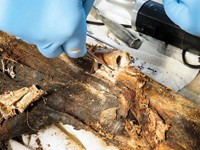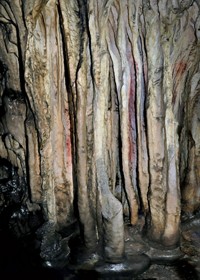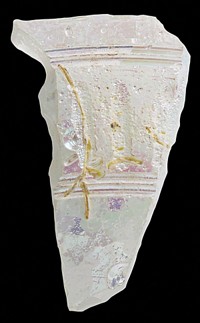Advertisement
Grab your lab coat. Let's get started
Welcome!
Welcome!
Create an account below to get 6 C&EN articles per month, receive newsletters and more - all free.
It seems this is your first time logging in online. Please enter the following information to continue.
As an ACS member you automatically get access to this site. All we need is few more details to create your reading experience.
Not you? Sign in with a different account.
Not you? Sign in with a different account.
ERROR 1
ERROR 1
ERROR 2
ERROR 2
ERROR 2
ERROR 2
ERROR 2
Password and Confirm password must match.
If you have an ACS member number, please enter it here so we can link this account to your membership. (optional)
ERROR 2
ACS values your privacy. By submitting your information, you are gaining access to C&EN and subscribing to our weekly newsletter. We use the information you provide to make your reading experience better, and we will never sell your data to third party members.
Analytical Chemistry
Age Of Pottery Making Moved Back
Study of potsherds from China contends that the craft dates back some 18,000 years
by Mitch Jacoby
June 4, 2009

Pottery making dates back nearly 2,000 years earlier than previously believed, according to an international team of scientists. On the basis of archeology and radiocarbon dating methods, the researchers, based in Israel, China, and the U.S., determined that fragments of pottery unearthed in Yuchanyan Cave in China's Hunan province are approximately 18,000 years old (Proc. Natl. Acad. Sci. USA, DOI: 10.1073/pnas.0900539106).
Previous studies of archeology sites in East Asia set the ages of the oldest potsherds ever analyzed in the 15,000- to 16,000-year-old range. Many of those studies, however, do not include systematic analyses of the ages of the strata in which the pottery fragments were recovered. A key challenge in these types of studies centers on pinpointing carbon-rich materials in the immediate vicinity of—and associated with—the potsherds and then accurately measuring the ages of those carbon-based materials.
Elisabetta Boaretto of Weizmann Institute of Science, in Rehovot, Israel, explains that the ancient ceramic fragments themselves cannot be dated because they do not contain preserved organic material that can be related to the time of use or creation of the pottery. So Boaretto, archaeologist Xiaohong Wu of Peking University, in Beijing, and their colleagues analyzed a large number of charcoal and bone collagen samples collected throughout the cave, including samples found in strata above and below potsherds.
In that way, the group produced an archeological timeline that ties the pottery fragments to datable specimens recovered from the same layer of sediment. The analysis shows that humans were firing clay to make pottery containers nearly 2,000 years before the craft was previously thought to have developed.
The researchers conclude that the cave, which contains, in addition to the potsherds, a large amount of ash, animal bones, and tools made of bone and shell, was used as a foragers' camp in the Late Paleolithic era.





Join the conversation
Contact the reporter
Submit a Letter to the Editor for publication
Engage with us on Twitter